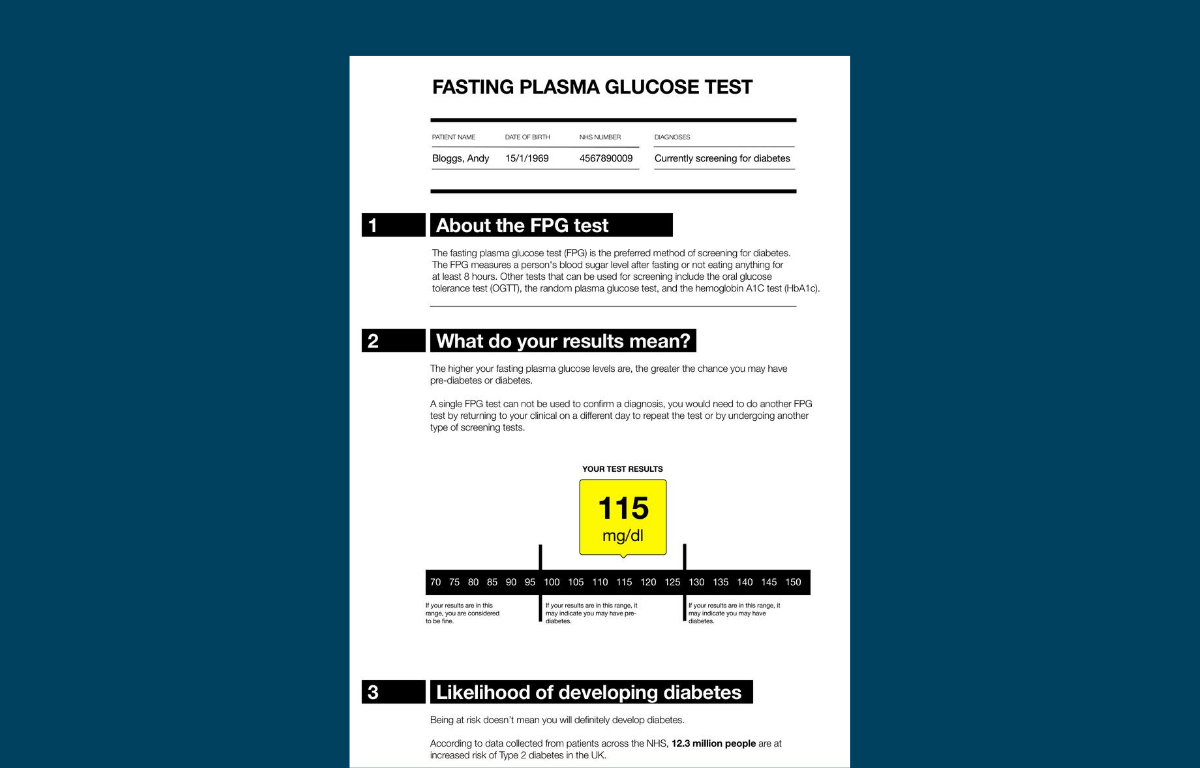We worked with a design agency to research and prototype new ways to develop people’s understanding about patient data. We started by considering the person’s context and trying to understand what matters to them, to find moments in their interactions with the healthcare system when they'd be open to learning about data.
What we did and why
Explanations about the use of patient data are often abstract, using research or insights that don’t closely relate to people’s lives and what they care about.
Starting with the data - not the people it’s about - makes it hard to get through to people who’ve got lots of other things to think about when managing their health.
With this project, we wanted to flip that approach on its head. So we started by trying to understand how people interact with the health system. Our goal was to find moments where people might be interested in learning about how data informs their care and in turn, how their data could inform research and planning.
We worked with the design agency COMUZI to:
-
Interview healthcare professionals and members of the public to find the right times and contexts to explain patient data.
-
Develop and iterate a series of prototypes to test out our ideas. The prototypes aren’t concrete products or solutions, instead they show practical examples of how to explain patient data at the right time, with the right level of information for that context.

What we learned
Here are the key things we learned from this project about how to explain data to people:
1. Make it relevant
- People are more likely to be interested in how data is used if it helps them learn about their own condition(s) and treatment.
- In moments of change to their care, people seek out information. That makes those moments a good time to explain how patient data is used.
- Explaining how data is used to inform decisions can help motivate people to change behaviour or follow treatments.
2. Find multiple moments
- Explaining data over multiple small moments raises less anxiety and concern than explaining everything in one go.
- But there's only so much information people can digest in one interaction – which is dependent on the context.
- The more detail, the more questions people have – it's important they can go somewhere for answers.
- Explanations about data will always raise concern for some people, who may want more information about security and third-party access.
3. Explain the benefits
- People want the health and care system to learn from their experiences and improve for others in future. So they are often supportive of patient data being used in ways that benefits other patients and the NHS.
- Giving relevant examples of the benefits from using patient data can help reduce concerns.
Want to know more?
The team is happy to present our full research findings and prototypes, so if you’d be interested in finding out more about this project please do get in touch.
We’re especially keen to hear from people who think they could use the ideas we’ve shared here in their own work.
Write to us at hello@understandingpatientdata.org.uk if you’d like to chat.
Learn more
If you found this page helpful, you may be interested in this video about how to communicate the way patient data is used. Grace talks through some tips and points to some more resources to help you.
